
As parents, we see our children a little differently than the rest of the world does. We believe them to be unique in their beauty, innocence, and joy. Nowhere can this be more thoroughly expressed than when a mother or father photographs their own children with the entirety of their heart and soul. Love radiates from the image. It is not something that can be replicated in a photography studio or in a photograph taken by a stranger—it is a unique alchemy between child and parent that brews such magic.
In this chapter, parents share the reasons they photograph their children—not simply to capture a smile and happy holidays, but to embrace the beauty of quiet moments, faces they alone know as well as their own. Some are professional photographers; some of them just simply love the medium. I hope they inspire you to seek opportunities to photograph your child in a new way, challenging you to create gorgeous, authentic imagery and, above all, to create magic.
www.beagoodgirl.net and www.holgarific.net
Jördis, Mathias, and their three-year-old daughter Mari live in Berlin, Germany. They own way too many cameras. Photography for them is a way to document their daily lives, and they enjoy taking pictures not only of Mari, but also of the children of their friends and families.
1. What do you enjoy most about photographing your family? We enjoy capturing moments. When we take pictures of our family, we strive not for the perfect portrait or photo, but to capture those happy times and also the times when things are not so great, when our little one is sick or when she’s having another one of her little mood swings. It’s what defines us as a family, and it’s these moments that shape us.
2. What is your favorite camera to shoot with and why? While a digital camera is a great tool to take pictures of kids and family, it’s the film cameras that took our hearts. There’s just so much more atmosphere in film and Polaroid shots. We shoot with a Nikon D80 every now and then, to do quick photo shoots with our tiny little princess, but Jördis’s, favorite is the Pentax ME Super, a 35mm film camera, and Mathias enjoys shooting with his Pentacon Six, a medium format camera. We do enjoy taking out a Polaroid camera every now and then, too. It’s a special treat for our little one, too, because she gets to watch the photos develop.
3. How would you define your style of picture taking? Do you think it’s important to cultivate a style or just to shoot? Our style of picture taking evolved before we had Mari, and it has certainly had a big influence on how we take pictures of her. We try not to take an abundance of snapshots and choose the best ones later. We try to capture a moment as well as possible. In general, we don’t take pictures all the time, but only when it feels right. You can take all the pictures in the world of your little one, but don’t forget to live in the moment instead of feeling the urge to capture it. We don’t think it’s important to cultivate a style, as over time, you’ll automatically start developing your own.
4. How do you keep your daughter interested in having her photograph taken? We try not to overdo it with taking pictures of her, so we can keep her engaged whenever we feel it’s a great moment to capture. Believe it or not, we even forgot to bring a camera to the hospital when our daughter Mari was born. One important thing we’ve always done is show her the pictures we’ve taken. We go through them, and she thoroughly enjoys looking not just at her photos, but at all the ones from a trip, from a day out, or a day spent at home making pizza dough.
5. What advice would you give to those who are ready to hone their artistic eye in terms of photographing their children? Try not to force it; don’t give in to the fear you may miss capturing a special moment with a camera. If you do, you’ll miss these moments, and no photo in the world will bring them back. Take pictures of your kids in their natural habitat. You’ll be much happier looking at pictures of them playing, when they’re outside, when they’re having their greatest moments.
We like taking pictures of little details, too. It’s about telling little stories, something which is more important to us than having a large collection of portraits of our little one. If you do take a lot of pictures, it’s okay to delete some of them. Go through them, find the ones that make you smile, keep them, and delete or archive the rest. These shots are the ones that really matter.

Melissa Frantz is a Canadian expat living with a house full of American boys in Portland, Oregon. She never considered she would be a parent to three small boys, even though it all seems to make perfectly good sense to her now.
1. What do you enjoy most about photographing your family? When my oldest was a baby, I was so taken by his every look and quirky gesture that I tried to capture it all on (what was then) film. As my family has grown, my favorite thing to try to capture is the dynamic between all three of my boys. Documenting their relationship has become the most important part of our family photo collection and highlights the differences between their personalities better than I could have imagined.
2. What is your favorite camera to shoot with and why? I don’t think I own my favorite camera yet! I shoot with a very basic Canon DSLR, but my heart still belongs to my Canon AE-1, even though it mostly sits in a drawer unused. I do have a favorite lens: a basic 50mm. It forces me to move around and really prioritize what I’m trying to capture. It also does great things in low light, which is key since I don’t use a flash.
3. How would you define your style of picture taking? Do you think it’s important to cultivate a style or just to shoot? My style has been defined by the constant movement of my boys. Almost every photo contains a blurry hand or a foot that has left the pavement. When my oldest was quite young, I began to take photos of him by our front door or sitting on the front porch. Now that area documents everything from the first day of school to a new haircut. I think it’s important to shoot a lot of photos—but I think the way that you grow your style is to cull those photos down to the very best ones and get rid of the rest. It is in the editing that style is really born.
4. How do you keep your kids interested in having their photograph taken? I don’t! If they don’t want to cooperate, they will go out of their way to make things interesting. The only way I can occasionally distract them is to ask them to sing me a song or tell me a story. Sometimes the best photos happen in those few seconds while they try to think of something to say or decide on a key change. They all go through phases of wanting or not wanting the camera around, and I have just had to learn to go with it.
5. What advice would you give to those who are ready to hone their artistic eye in terms of photographing their children? Decide what sort of pictures are most important to you and what sort of pictures you’re going to want to look at in ten or fifteen years. Don’t worry about pleasing the grandparents or your social media contacts or even the subjects in your photos! Once you start taking pictures that you really love, you’ll notice that there are certain things about the “best” ones that say something about not only the time and the place, but also about the personality of your subject.
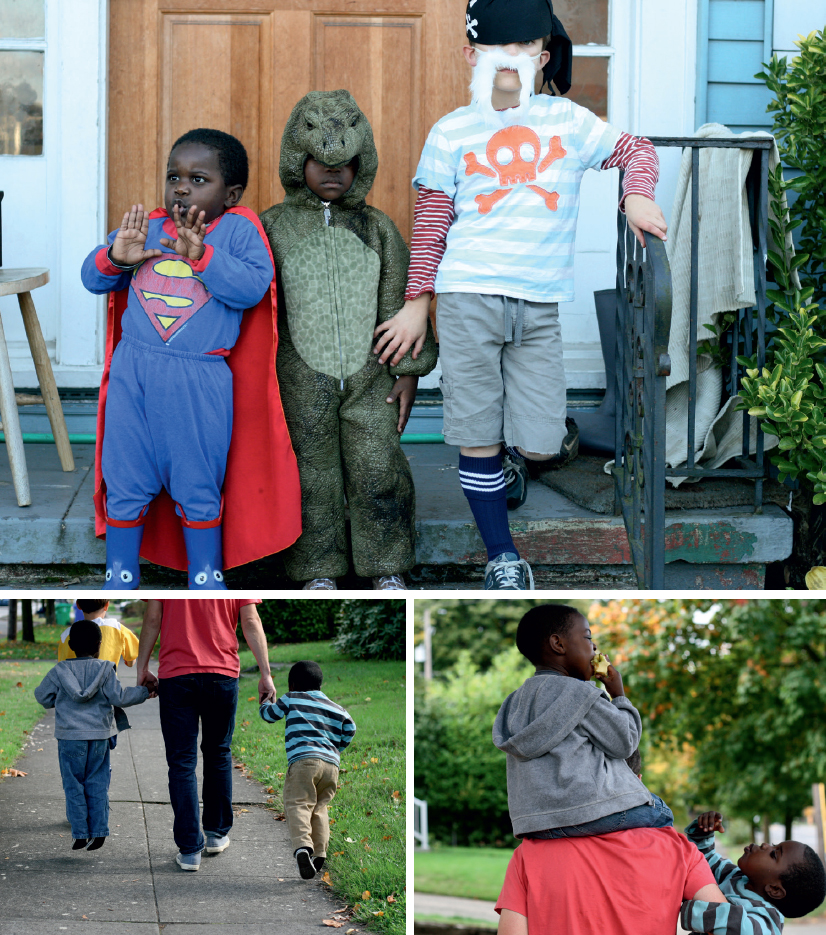
Carissa is a photographer who grew up in southern California and now lives with her husband, Andrew, and their daughter, Rinah, in northern Virginia. Their family was united during the fall of 2011, when Carissa and Andrew finally brought Rinah home from Uganda. They are constantly pursuing the creation of innovative and implosive art. The love and unity within their family is the fuel that they use to create. Nature, words, music, and other humans help, too.

1. What do you enjoy most about photographing your family? This year, the man who inspired me to pick up a camera was no more on this earth. My grandfather gave me many cameras and showed an interest in my photography without fail. When he died, I went through thousands of photos that he’d taken. I saw my father when he was little, and I learned more of my history. The thought of my children’s children doing the same thing brings me great joy.
2. What is your favorite camera to shoot with and why? I shoot with my Canon 5D Mark II more than any other camera. I know it well, and I think it knows me well, so we work together like old friends.
3. How would you define your style of picture taking? Do you think it’s important to cultivate a style or just to shoot? I think it’s important to shoot what your mind’s eye finds beautiful. I am the only one who sees through my eyes. I want to capture what I see, the way I see it. I think a style will develop through that alone. Attempting a certain style from the beginning could hinder becoming who you are as a photographer. Cultivating the art of capturing those you love, how you see them, is a beautiful thing!
4. How do you keep your daughter interested in having her photograph taken? It’s a little unique for us: our daughter spent her first eight years in a place where cameras are still extremely novel. The first time I went to where Rinah lived in Uganda, I almost avoided taking my camera out of its bag. The moment I did, I had a mass of children crowding around me, waiting for me to take a photo of them to then show them the tiny image on the back of my camera. Rinah still has that in her, in some ways. She is still just so excited to see what a camera can do. Sometimes I have to be more like a paparazzi than anything, so I can capture her before she notices me.
5. What advice would you give to those who are ready to hone their artistic eye in terms of photographing their children? You love your children like nobody else does, and your children are more comfortable with you than they are with anyone else. Because of this, you have such a unique opportunity to capture them as who they are. I think everyone should just start shooting with whatever they have, be it film or a phone.

Hannah Huffman lives in Southern California with her husband David and her three children, Eliot, Collette, and Arlo Jane. By day, she tromps around construction sites, keeping people compliant with environmental regulations, and by night she tries to spend as much time with the camera as possible. A dozen or so years ago, her husband gave her an old film camera. She loaded a roll of film (backward), and came back home with nothing. So she promptly shoved the camera in the closet and forgot about it for a few years until her son was born. She followed him around with a cheap point and shoot for awhile, then dug around in the closet for the old camera and never looked back.
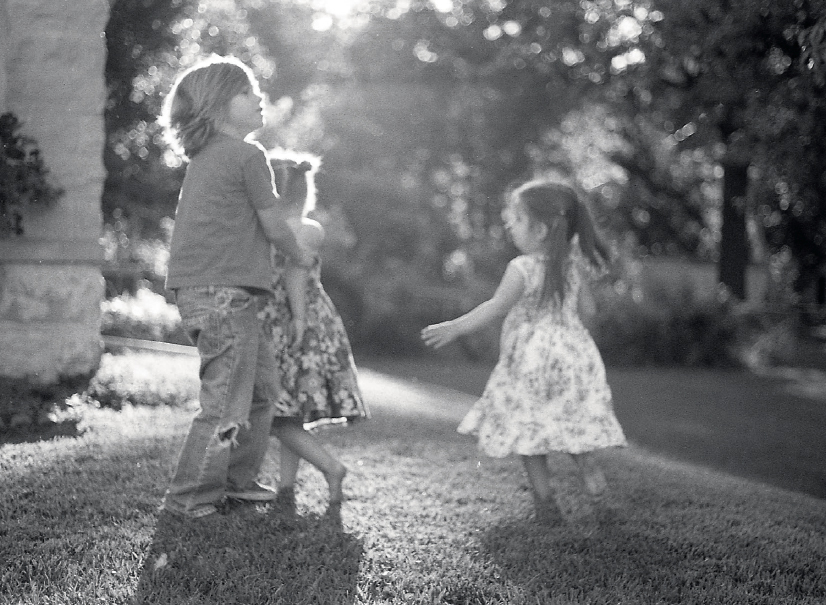
1. What do you enjoy most about photographing your family? I love having a collection of images that tell the story of our family. I’ve been taking pictures of my family nearly daily for the last seven years. I find that time and time again, somehow the camera manages to capture moments that are almost overlooked, even in the moment. Without fail, it’s these photos that I treasure the most. It’s important to have pictures of my children smiling dutifully at me, lined up in a row on the sofa. I have them, and they keep my mother happy. But it’s the photos of my son laughing, or the girls twirling around in the backyard, or the tears from the scraped knee that I will love for ever and ever.
2. What is your favorite camera to shoot with and why? My Nikon DSLR is invaluable for shooting every day, but it’s my Pentax K1000 that is my favorite. Shooting film feels wonderful, and there is something about the stripped down simplicity of the K1000 that is so satisfying. Slowing down to think about the manual settings of the Pentax has also translated to and improved my digital photos. What’s not to love about that?
3. How would you define your style of picture taking? Do you think it’s important to cultivate a style or just to shoot? I really do enjoy the magic and beauty of everyday life. My most favorite photos are always those of people laughing. If you shoot what you love, you’ll want to do it, and you’ll keep doing it, and eventually you’ll get better and better.
4. How do you keep your kids interested in having their photograph taken? I’m not going to lie, in the beginning it was straight up bribes. I think I let my son eat a whole sleeve of cookies once, just to get the shot I wanted. Eventually though, your children will get used to having the camera around all the time. Also, listen to their suggestions, and take a few photos the way they would like to see them. They get excited to pose and get more excited looking through the photos later.
5. What advice would you give to those who are ready to hone their artistic eye in terms of photographing their children? This may sound scary, but turn your flash off and switch your camera to manual. It will really help you learn how your camera works. Natural light is your friend. Take your child over to the window or the open front door and take a few photos—you’ll see what I mean.
Just before becoming a husband and father, Ryan decided to run from the regular nine-to-five life to give his dream of being a photographer a try. So he quit his sales job and dedicated himself to studying photography, and he chronicled his mistakes and triumphs online on his blog, Pacing the Panic Room. It became the home base for the story of the building of a family and his career.
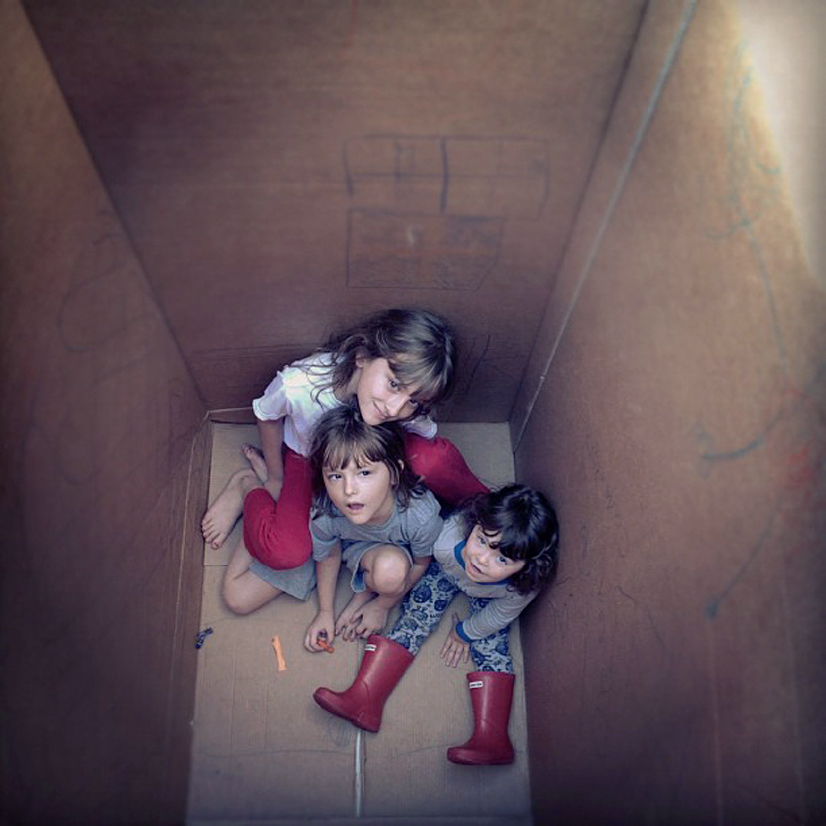
1. What do you enjoy most about photographing your family? Every time I take a picture of my family, I imagine them opening up a box twenty years from now and finding all these photos inside and just filling up with memories, and smiles, and love.
2. What is your favorite camera to shoot with and why? A couple of years ago I finally bought a Polaroid 600SE “The Goose.” From the first pack of film I shot, it instantly became my favorite camera to use around the house. There is just something about yanking the film out the side of the camera, letting it cook, and then peeling apart a gorgeous looking finished photo. But I also quickly found that the kids act the most natural around the iPhone, so I started using it like crazy. There is no other camera I own that I get this kind of candid shot with.
3. How would you define your style of picture taking? Do you think it’s important to cultivate a style or just to shoot? With the massive amount of photo sharing that goes on online these days, I feel like it’s important to cultivate your own style. I’m often confused when I see so many people follow trends, or when people all start using the same filters and actions, and all of a sudden everyone’s photos all look the same.
4. How do you keep your kids interested in having their photograph taken? I made a rule for myself that if the kids ever ask to not be photographed, I immediately just say “okay” and put the camera down. No fuss, no insisting, I just put the camera away like it’s no big deal. The second you give them power by pleading or begging them, they will wield that power, ruthlessly. They don’t know any better; they have no choice but to beat you down with stubbornness.
5. What advice would you give to those who are ready to hone their artistic eye in terms of photographing their children? To me, great photos of the kids means catching them deep in a moment. So my advice is to keep the camera close and ready, and try not to disrupt a moment. Always look for the little details that tell part of their story: If their shoelace is untied, leave it alone. Don’t tidy them up for every single picture, and never, ever, say “smile.”

Mia Moreno is an artist, photographer, and mother living and working in her hometown of El Paso, Texas. She has a BFA in drawing with a minor in painting from the University of Texas at El Paso. If she is not drawing, painting, sewing, or out on a photo-taking adventure, then she is probably watching Little House on the Prairie reruns with her daughter Isabella—her inspiration, muse, and sparkly little sunshine.

1. What do you enjoy most about photographing your family? Photographing my daughter gives me the opportunity to practice patience and understanding within our relationship. It also helps me deal with some of the inevitable challenges of raising a girl in a world that tends to focus on the external. I believe taking the time to create thoughtful portraits can help my daughter develop healthy self-esteem. I love having photographs that reflect the way I feel about being a mother. Someday, when Isabella has a family of her own, they will be able to enjoy our memories, too.
2. What is your favorite camera to shoot with and why? I love shooting with my Polaroid cameras best, particularly with my Polaroid SX-70. But my Pentax K1000 comes in a very close second. Polaroid cameras and instant films give me images filled with dreamy, soft atmospheres and beautiful, magical tones. My 35mm Pentax K1000 is a tough, reliable camera that allows me to take advantage of having full manual control over settings such as focus, shutter speed, and depth of field. I carry both with me most of the time.
3. How would you define your style of picture taking? Do you think it’s important to cultivate a style or just to shoot? I think developing a style helps express mood, emotion, and atmosphere in a specific sense. Discovering what interests you most about creating an image can help communicate your ideas more effectively. I attempt to capture my daughter so that she appears introspective. Capturing the beauty of innocence is important to me. My goal is to record Isabella’s personality, as well as her likeness.
4. How do you keep your daughter interested in having her photograph taken? Using props helps keep my daughter’s attention and can serve as a diversion from the ingrained “smile at the camera” shot. Favorite toys and objects work well. A reward system (aka bribery) also helps. I also allow Isabella to photograph me. This gives me the opportunity to teach her about photography, takes the pressure of posing off her, and keeps the mood light.
5. What advice would you give to those who are ready to hone their artistic eye in terms of photographing their children? Try to compose shots in the viewfinder of your camera without thinking about having the ability to crop them later. Knowing some basic composition rules can also help in learning to see potentially effective shots. A fitting background is just as important as your subject. It’s important to be aware of the cut-off points on a body in portraiture. For example, don’t cut off a shot at the ankle, wrist, or knee. Try to frame shots above joints—above the elbow and above the knee.
Irene Nam is a photographer and writer based in Paris, France, where she was born and raised. Her images have appeared in various print and online publications and on exhibit at the Fotofest Gallery in Houston and the Impossible Project Space in New York City. Irene works with nonprofit organizations to improve the quality of life, education, and future of children around the world. She is also a contributing author for ShutterSisters.com, a global community for women photographers and for Expressive Photography: The Shutter Sisters’ Guide to Shooting from the Heart (published by Focal Press).

1. What do you enjoy most about photographing your family? The opportunity I’m given to extend a moment beyond the limits of time, distance, and memory, to hold onto that one moment and the emotions around it. Photographing my children also helps me validate the little things in life that I might otherwise tend to dismiss as trivial. It reminds me to live mindfully in the moment and cultivate a sense of wonder and love for simple things.
2. What is your favorite camera to shoot with and why? I mostly shoot with my Canon 5D (which I use with a 50mm lens) and my Polaroid SX-70, based on circumstances such as location and light. I truly enjoy the convenience and many possibilities that digital photography offers, but I have to admit that my love for Polaroid (and film photography in general), fully entrenched in the beauty of its texture, process, and imperfection, is expanding every day.
3. How would you define your style of picture taking? Do you think it’s important to cultivate a style or just to shoot? To be honest, I don’t know if I have a style. But I do have a vision that I believe is unique to who I am and that comes out in my images. So I would say it’s important to cultivate a sense of authenticity, to do what brings you joy, to embrace your imperfections and let go of any preconceived notions about what is beautiful, and just shoot what you love.
4. How do you keep your kids interested in having their photograph taken?
I try not to make them pose. I also do not give them any sort of warning so that having their photo taken doesn’t become something that bothers them or makes them self-conscious. I also share images with them as often as possible. Over the years, I’ve realized that this helps them understand what I do, but also allows them to experience the world and see themselves through my eyes.
5. What advice would you give to those who are ready to hone their artistic eye in terms of photographing their children? Have fun. Experiment. Don’t aim for the perfect headshot. Look for the perfect moment instead, as fleeting as it might be. Learn the basics about lighting, composition, and depth of field. Although there’s something daunting and intimidating about techniques in photography, developing your skills will enable you to create the images that you want. Listen to your inner voice. Silence your critical mind. Be patient. Actually, be very patient.
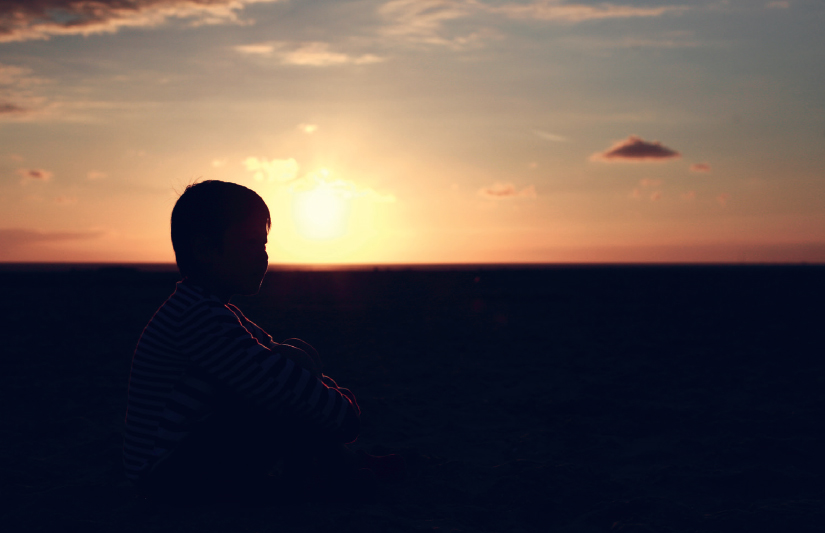
Jenna Park is a freelance art director and designer and the co-owner of the Brooklyn-based bakery Whimsy & Spice, which she founded with her pastry chef husband in 2008. As an art director, she has designed websites for clients such as the Smithsonian Photography Initiative, Storm King Art Center, Aveeno, the Harvard Graduate School of Design, and Artspace. Jenna is an avid photographer; a blogger since 2001, she writes about life in New York, raising two little girls in the city, and juggling a family business.

1. What do you enjoy most about photographing your family? Knowing that we’ll be able to look back on these photos five, ten, twenty years from now and have a record of history, not only of our family, but of the cities we lived in, the clothes we wore, the cars we drove, the way we furnished our homes. It’s what I enjoy most about looking at my own childhood photos—an anthropological look at life in New York city during the ’70s and ’80s.
2. What is your favorite camera to shoot with and why? I shoot with the Canon 5D Mark II and tend to take that out with me most of the time, but that camera is a beast to carry! Like many people, I’m using my iPhone camera more and more to capture candid, everyday shots.
3. How would you define your style of picture taking? Do you think it’s important to cultivate a style or just to shoot? I like to shoot what I see, to document and quietly observe. This is how I approach picture taking when people and places are my subjects. I adopt a similar approach to product photography for our bakery business, and I think our photos do have a style that has contributed a certain presence to the company’s branding, but I’m less sure if any clear style exists for my other photographic work. I just keep shooting. I trust that eventually a style will emerge.
4. How do you keep your kids interested in having their photograph taken? As the girls get older, it gets tougher to coax natural expressions out of them. Many times they will pose or put on exaggerated smiles as they become more aware of the camera. My older daughter is also at an age where she is less willing to be photographed and will often hide from the camera. This is why I like to shoot candid moments, almost as if I’m not in the same room as they are, never interrupting them in play or in motion, but just documenting what is happening.
5. What advice would you give to those who are ready to hone their artistic eye in terms of photographing their children? While formal portraiture can be beautiful, I think the most interesting shots are those that are completely candid and of the moment. That is the beauty of photography after all—the ability to capture moments unseen by the eye. For me, these moments are often found when I’m photographing my two girls together. I might capture a look, a shared expression, or interesting body language between the two of them that tells a story.
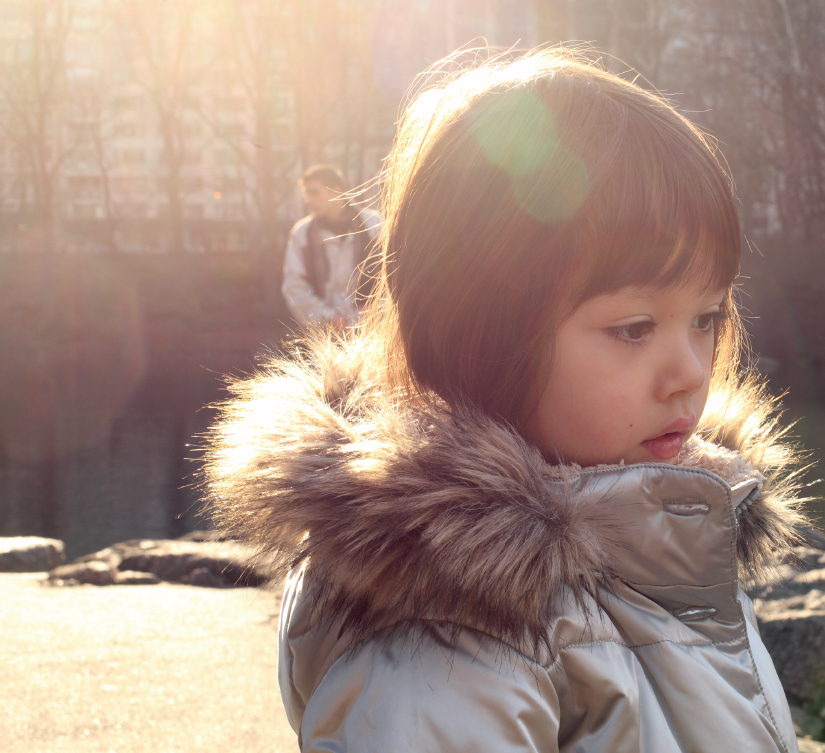
I find that one of the best times to photograph children is when they’re playing or engaged with an activity. They are not as self-conscious about the camera, and it’s easy to move around and shoot from all angles. Sometimes I’ll call to my girls to look up so I can get a shot where they are looking into the camera. It’s spontaneous enough so there is little time for them to pose and put on one of their “camera faces”!
Lynn Russell is the letterpress printer and designer for Satsuma Press. She works and makes her home in Corvallis, Oregon, with her husband Ben and their seven-year-old son, Liam. Liam has a rare neuromuscular disorder called Spinal Muscular Atrophy Type 2. He is, of course, much more than his diagnosis—charming, smart, mischievous. Many things are altogether different than what they ever could have imagined—sometimes heartbreaking, sometimes amazing, and sometimes both at the same time.

1. What do you enjoy most about photographing your family? I love capturing a look on Liam’s face—delight, wonder, joy, daydreaming. Every parent will say this, but kids just grow up so fast—so it’s important to me to be able to document these little pieces of our life, even though I am not very good at having my camera at the ready. My photographs tend to ebb and flow, which is okay with me, too.
2. What is your favorite camera to shoot with and why? I have three cameras: a Nikon D40, a Canon G10, and my iPhone. I bought the Canon because of its smaller size, but I actually tend to use the other two most often—the phone camera because I always have it with me, and the Nikon for most of my product shots and portraits. I just got a new lens for the Nikon with auto-focus, which—at least for me—is key when taking photos of kids.
3. How would you define your style of picture taking? Do you think it’s important to cultivate a style or just to shoot? I don’t like complicated, fussy images, so I like to think that I keep it simple—as much for photography as for my letterpress printing and design. It’s important to cultivate a style, whatever that may be, that’s consistent with your own aesthetic. Part of that, I think, lies in simply taking more photos so that you can distill your images down to what appeals to you most.
4. How do you keep your son interested in having his photograph taken? Ha! Liam is a pretty photogenic child, at least he was until the past year or so. Now he loves to make horrible faces at the camera for fun, so I try to sneak photos of him when he is otherwise occupied.
5. What advice would you give to those who are ready to hone their artistic eye in terms of photographing their children? I don’t think any kid looks as good in a staged environment as in their natural one. Good, natural lighting without a flash—that’s important to me. I don’t like posed photos, so I try to find moments when Liam is immersed in something—by himself or with his papa or his friends. These are always the sweetest, most genuine photos.
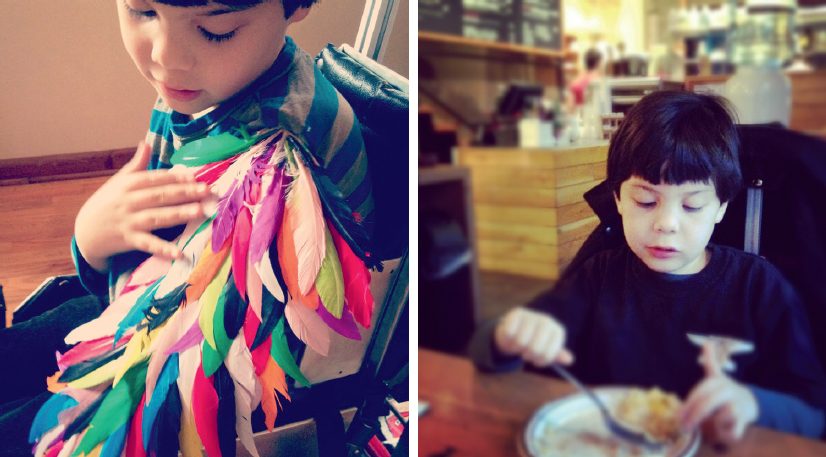
Rachel Saldaña is a photographer, writer, and blogger. Her work has been featured both online and in galleries including photographs featured in Somerset Life magazine. She also shot the photography for the watercolor book Water, Paper, Paint by Heather Smith-Jones. Rachel currently resides in Corpus Christi, Texas, with her husband and two daughters. She loves finding beauty in the everyday and can be found writing about her search for contentment on her blog, Buttons Magee.
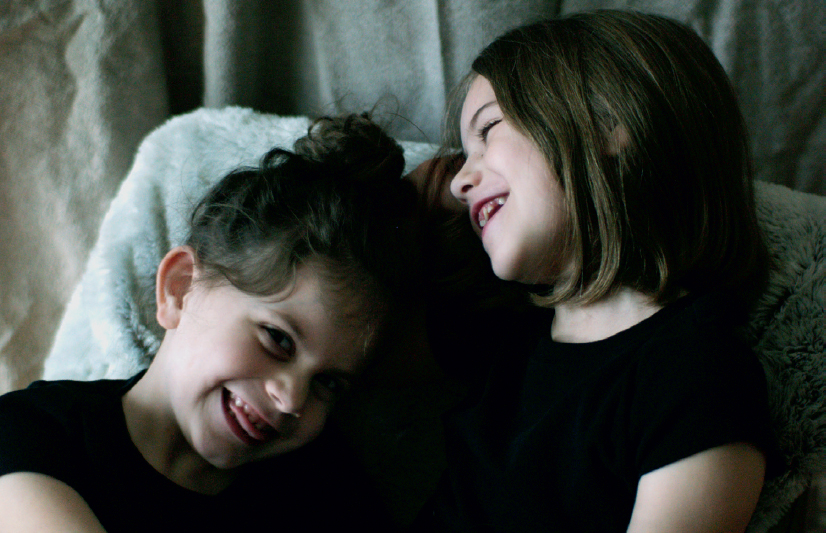
1. What do you enjoy most about photographing your family? For me, the best part of photographing my own children is the comfort they feel around me. Being children of a photographer means getting accustomed to having a camera around constantly. They never even pay attention to me anymore, and I am able to capture moments that might normally be missed due to self-consciousness. I look back at photos from years past and really can see my girls’ personalities on display.
2. What is your favorite camera to shoot with and why? The camera I pick up most often is my Pentax KM 35mm, a camera I’ve owned since high school. Film is my first love, and that camera feels like a part of me. I also have a Hasselblad 500c medium format film camera and an Olympus e-500 DSLR that are on heavy rotation.
3. How would you define your style of picture taking? Do you think it’s important to cultivate a style or just to shoot? I would like to consider my style to be more of a natural photography. I never ask for a smile from my subject, preferring to go with whatever reaction they are giving me. The same goes for actual portrait sessions. I believe the more you shoot, the more you will begin to see a personal photographic style emerge. Take a lot of pictures and take them often. Before you know it, you will just have a way you go about shooting.
4. How do you keep your kids interested in having their photograph taken? I most often act as a shadow and just shoot them doing whatever it is they are already doing. They usually pay no attention to me. If I do want to have more of a portrait session, I try to include props of some kind or music. In addition, I will usually tell them that I am testing lighting or some such thing so they stop fixating on the lens. I also keep them occupied with conversation and joking so they stay interested.
5. What advice would you give to those who are ready to hone their artistic eye in terms of photographing their children? I would say to learn to look for the “after-shot.” That is the photo right after a slightly more stiff moment. Maybe the kids are being silly making faces. Eventually, that silliness will turn into an actual moment of laughter and genuine smiles. Also, patience is key when it comes to children. Finally, I would say practice, practice, practice. The more photos you take, the better your eye will become!
